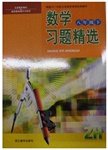题目内容
The majority of doctors ________ smoking is harmful to health
- A.are believed
- B.had believed
- C.has believed
- D.believe

 习题精选系列答案
习题精选系列答案So you have been called for an interview---well done?Your effort has been paid off? You will feeI better at the interview if you show an understanding of the nature of the organization.
Ask someone who already does it,or check it with one of the advisers.
Ask a member of your family or a friend to act as the employer and to give you an unreal interview.Be as realistic as possible,answer the questions seriously.Afterwards discuss how it went.Think about how the employer would prefer to see your look.Remember---the majority of employers are over 30.
It is not wise to rush out and buy new clothes.which will be worn for the first time at the interview.You’ll feel more at ease in a familiar dress.
Carelessness in any of these could cost you the job.Arrive at least 15 minutes before time,this will give you a chance to have a look around,read the notice board and get the feel of the place.Being late at the interview produces a bad impression.The first impression that the interviewer gets of you is formed as you walk through the door,so take a couple of deep breaths.
Be ready to shake hands if the interviewer offers.
Don’t take a seat until asked.Then sit comfortably.
Make eye contact when you are greeted and again if you shake hands.And during questioning,eye contact is a form of non-verbal greeting.
Remember the interviewer’s name and use it from time to time.
Be ready for the question “Is there anything you want to ask?” Before the interview you should get ready for two or three such questions.Look on these not just as a chance to get information but as a means to give your employer a better impression.Asking can show knowledge but avoid asking about holidays,pensions(养老金)and so on.It looks as if you are tired even before you begin.You can check on these later,when the hope for job is offered.
And if you fail, look upon the interview as an experience in itself.Learn from it.We wish you good luck and good job hunting.
【小题1】Before you go to see the employer,you’d better .
| A.find a dress you have got used to |
| B.buy some modern shoes,ties,etc. |
| C.have your hair cut |
| D.put on your newly-bought clothes |
| A.A kind of greeting without words. |
| B.Shaking hands with the interviewer. |
| C.Looking at each other for a long time. |
| D.A way of getting a desirable job. |
a.Asking a friend to give you an unreal interview.
b.Understanding the nature of the organization.
c.Paying attention to your clothes.
d.Arriving at the place of the interview ahead of time.
e.Getting some information from the advisers.
| A.a—e—b—c—d | B.d—c—b—a—e |
| C.b—e—a—c—d | D.e—d—a—b—c |
| A.To give the employer more information. |
| B.To get information about holiday and pension. |
| C.To impress the employer better and get further information from the company as well. |
| D.To show that you are the most knowledgeable. |